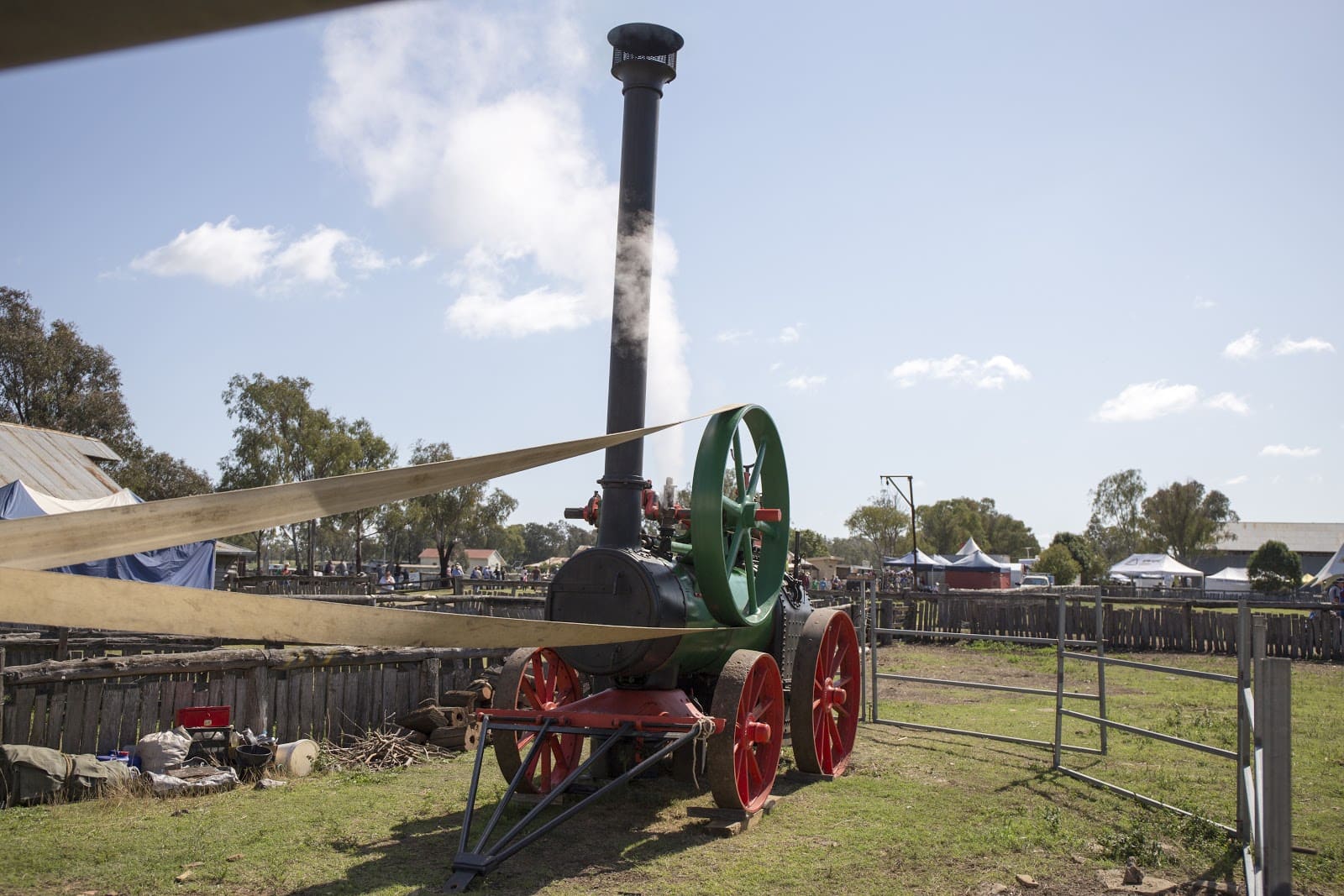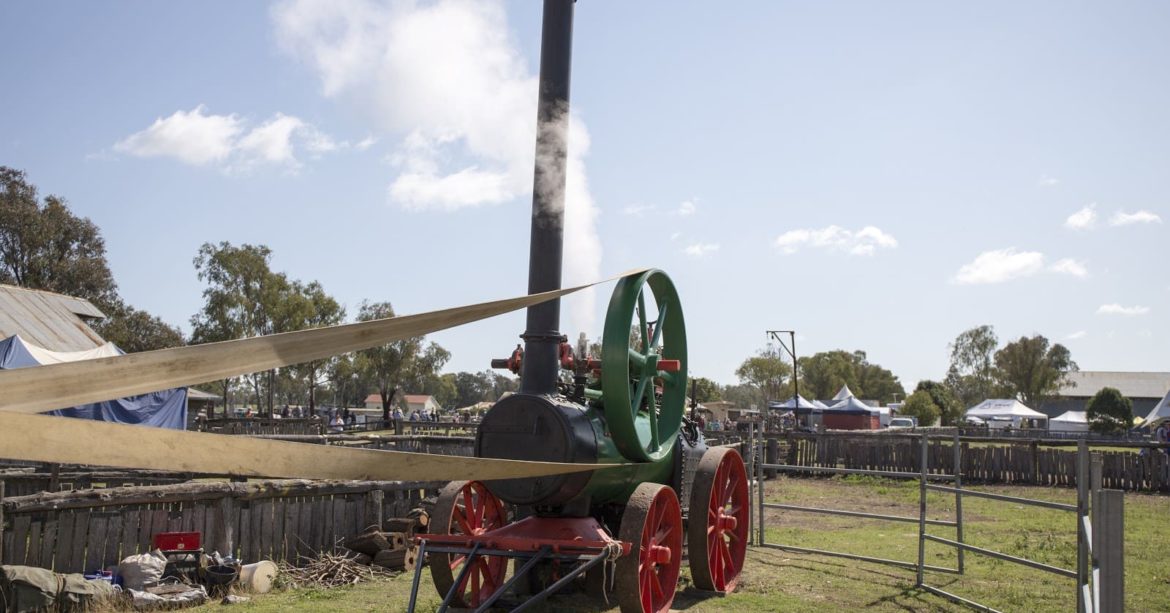History of the Jondaryan Woolshed
The Jondaryan Woolshed is a heritage-listed site 45 kilometres west of Toowoomba, in the Darling Downs region of Queensland, Australia. The Woolshed is at the centre of the Jondaryan Woolshed Historical Museum and Park, which is a major tourist attraction.
The venue is also a popular location for weddings. This is a very different situation from when the history of Jondaryan Woolshed began, in 1840.
Key points
- The Jondaryan Station began in 1840.
- The first shearing shed at Jondaryan Station was built in 1850.
- Construction on the Jondaryan Woolshed that exists today began in 1859.
- Visitors to the Jondaryan Woolshed tourist attraction can see demonstrations by shearers and blacksmiths.
Need a Quote?

Early history of the Jondaryan Woolshed
Jondaryan Station began in 1840. It was initially called Gundarnian, which meant Fire Cloud or Place of the Fire Cloud in the local Jarowair dialect. Henry Coxen first registered the station, in 1842, in the name of his uncle Charles Coxon who realised it was ideal land for wool production. With this in mind, Charles Coxon introduced sheep to Gundarnian in 1843.
The first homestead on the property was completed in 1844. The building was later moved upstream because it attracted too much lightning. Fire eventually destroyed this homestead, in 1937. In the same year as the original homestead was built, aborigines killed head man John Chatman.
It was this event, as well as financial difficulties, that persuaded Charles Coxen to sell Gundarnian Station to James Andrew and Robert Campbell. It was Andrew who changed the name of the station from Gundarnian to Jondaryan.
The sale did not prompt any immediate success. There were several more owners of Jondaryan in the following years. In 1847, the first Jondaryan Woolshed was built. The building was burnt down by striking shearers, in 1849.
Following this event, a small shearing shed was built, in 1850. In 1858, William Kent and Edward Weinholt took over at Jondaryan. They went on to buy the property, in 1863, and were the first people to make it profitable.
Construction of the Woolshed that stands today
The famous Jondaryan Woolshed that exists today was built soon after Kent and Weinholt took over the property. Construction began in 1859 and was completed in 1861, although the final iron roof was not put in place until 1862. The building was enormous, with 5,000 sheets of corrugated galvanised iron used for its roof. The rest of the shed was made from Ironbark timber.
Manager of Jondaryan station, James Charles White, designed the Woolshed as well as several other buildings at the station and St. Anne’s Church. The finished structure was 300 feet (90 metres) long and housed 52 shearing stands. It was big enough to hold 3,000 sheep.
Shearing in the Jondaryan Woolshed began in 1861. After the first session of shearing, the station hosted a Shearers’ Feast, which featured a meal and a ball, as well as horse racing and other events.
The last parcel of 40,000 acres of land was purchased in 1864. This meant that the Jondaryan Station now covered 300,000 acres.
Four years later, in 1868, the railway arrived at Jondaryan. HRH Prince Alfred opened the new section of line. He had to stay in Jondaryan overnight in sparse conditions.
Changes at Jondaryan Station began in 1880 when it was broken up into smaller farms. The Jondaryan Woolshed remained to be used by individual farms. In 1890, 36 of its stands were converted to machine shears.
Also, this year, broad-acre farm machinery was introduced. This meant that the growing of crops started to take over, and sheep numbers declined.
The partnership of Kent and Weinholt was dissolved in 1894. Jondaryan Estates of Australia Pty Ltd took over ownership of the station. The station was finally broken up in 1946. In 1973, the Rutledge family gave the Jondaryan Woolshed to the people of the district, and the Jondaryan Shire Council took over ownership and management of the Woolshed in 2002.
Recent history of the Jondaryan woolshed
After local people took over, the modern history of the Jondaryan Woolshed began. Tourism was the sole income earned from the Woolshed. The Australian Heritage Festival became a popular annual event and was extremely successful. Problems started when these festivals became more widespread, as they are today.
This caused numbers at the Jondaryan Woolshed to decline. Overhead costs also began to grow. This meant that extra funding had to be acquired to keep the site going.

The Jondaryan Woolshed today
Despite the previous difficulties, the Jondaryan Woolshed is a thriving tourist attraction today. It is owned by Toowoomba Regional Council and is run by dedicated staff with the help of volunteers. Visitors to the site can see the only shearing shed in Australia with steam power.
There are examples of historic equipment and machinery. People can also enjoy wagon rides and watch blacksmiths, shearers, and people carrying out traditional bush crafts. Refreshment is provided at an onsite café, and there is also accommodation available at the Woolshed.
The Jondaryan Woolshed survives after a long and varied history. It may have a very different use than it did in the 19th century, but it’s no less impressive.
For more information
2 - 2Shares

